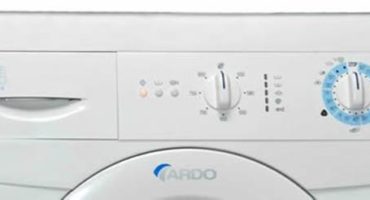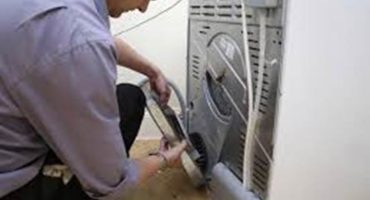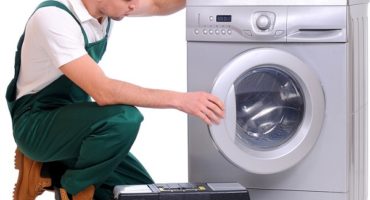- Insufficient connection
- Wrong position
- Bad joining of rubber and plastic components
- Defective hose replacement rules
- How to connect a drain hose to a washing machine
- How to disconnect and reconnect hoses for Indesit, Hotpoint Ariston, Samsung machines
- Changing the hose in German cars
- Hose replacement for Electrolux and Zanussi machines
- Conclusion
Currently, the washing machine is considered to be one of the most popular items of household appliances. Sales of models of all famous brands are growing every year. The demand for the services of masters is also growing, due to frequently occurring malfunctions for various reasons.
The causes and symptoms may be different. One of the most common is leakage.. It can arise because the cuff has loosened in the door near the hopper, the tank has been broken or hoses are loosely fixed at the joints. It often happens that after the descent of water or set on the floor there are puddles. This means that it’s time to change the hose, as a leak has formed in it. For example, a hole or weak attachment.
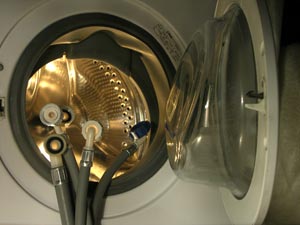
Water Hoses
At first glance, this problem is very simple to solve: tighten the clamps more tightly, but this method does not always work. In order to eliminate the problems that have arisen, first of all, you need to know the cause of their occurrence. This article will discuss in detail the reasons why the hose for the washing machine can leak or break, as well as ways to solve problems.
Insufficient connection
One of the main reasons why water flows after the drain is unreliable fastening. In this case, the drainage hose may stagger at the point of its connection to the machine or to the place of dirty water discharge after the next cycle. Reasons for the drain hose of the washing machine to flow may be as follows:
- The gasket located at the hose connections is worn. The rounded rubber gasket serves as an additional plug in the places where the hoses for supplying water to the washing machine tank are connected. Over time, the gasket wears out, becomes less elastic and gradually loses its shape, and a white coating forms on it. Most likely, in places where the screed and clamp are located, it starts to leak during operation. Most often, this occurs after the transfer of the washing machine to another place, in particular, transportation to a new apartment.
- The diameter of the rubber drain hose of the washing machine does not allow it to fit securely into the drain hole, as a result of which water flows to the floor.
- Hose clogged
All of these problems are easy to fix. If the washing machine hose is clogged, it can be cleaned with either a long wire or a stream of water, and if the problem is with a worn gasket, then you need to buy a new one. In order to avoid mistakes and unnecessary trouble, you can simply take an old, faulty gasket with you to the store and ask the seller to bring you the same, but working. Gaskets are very cheap and there are a lot of choices in plumbing stores, so you will not have problems with the purchase of this spare part.
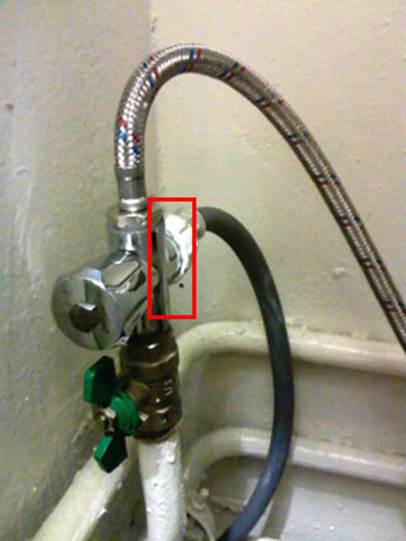
Inlet hose
Wrong position
It often happens that due to an improper position, the used water stagnates in the tank, and sometimes flows to the floor. This happens because the hose is skewed or the drain channel is uneven, for example, a critical height that impedes the flow of water - it does not go away during the drain and partially remains in the tank.
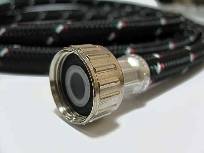
Gasket hose with gasket
To correct this reason, it is important to bring the hose at the junction with the water pipe and the drain to an even position so that the skew is not more than 45 degrees. The plastic part should lie exactly up to the place of discharge. It is important that the water pressure is distributed evenly. If in some of the parts the pressure is lower than expected, then there begins to flow.
Bad joining of rubber and plastic components
Leak may also appear inside the hose. For example, in the place where the docking occurs between its plastic and rubber parts. In most cases, the reason is the deterioration of the rubber half. Over time, the rubber deteriorates, loses its former elasticity and resilience, as a result of which the pressure of the fixing metal grip weakens and begins to leak at this point.
This problem may also occur when moving the machine to another location. At first, you can clamp the adapter with pliers to eliminate leaks or minimize them. However, it should be noted that this is a temporary solution and, most likely, soon you will have to install and replace the drain hose inside the washing machine. Actions should be done in stages. To learn how to disconnect a broken one and attach a working one, read the material below.
Defective hose replacement rules
If the cause of the leak is not the wear of the gasket, then you probably have to replace the hose. In order to replace the inlet hose with an akvastop, you do not need to call a master or possess any technical skills. This is easy enough to do. To do this, try to follow the step-by-step instructions exactly:
- Turn off the water at the water supply to the tank
- Gently unscrew the clamps
- Remove the old hose
Now, following the same pattern, but in reverse order, you can screw a new one. Before starting, open the faucet and hold the outlet in place with your palm to check that it is securely fastened. If there are any, unscrew the adapter and screw it back, but so that everything is level.
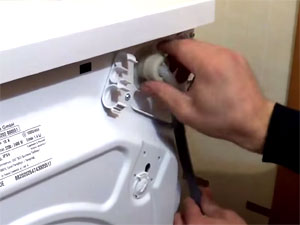
Hose clamp
Done! The inlet hose is in place. Now you can re-check for leaks. If it no longer drips, then the problem is solved. If it drips in other places, then you have to eliminate other possible equipment problems.
How to connect a drain hose to a washing machine
Replacing the drain hose requires much more time, since the drain hose is attached to the "inside" of the equipment and its design is made more intricate than other parts. In its head part, the hose is connected to the pump, so you need to disassemble the machine to start. Depending on the manufacturer, the hose will exit at the top or bottom of the housing. This will require disassemble the washing machine on the back side. Follow the step by step instructions:
- Turn the washing machine on its right or left side. So it will be more convenient to disassemble the lower part.
- Unscrew a few self-tapping screws on the back to loosen the cover
- Push the cover towards the back of the device
- Remove the cover
Done! Now you can safely begin to disassemble and understand how and where the hoses of your washing machine are hidden. Different models of internal parts are arranged differently, so when replacing, you should take into account some nuances.
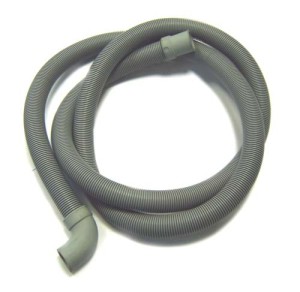
Drain hose
How to disconnect and reconnect hoses for Indesit, Hotpoint Ariston, Samsung machines
For household appliances of this model range, a drain hose is located at the very bottom, and you can get to it by removing the bottom panel. To do this, you need to follow the steps in this order:
- To start, prepare a bucket and a rag, as you will have to collect stagnant water that will pour after removing the filter from the pump
- Tilt the machine to one side, having previously moved it away from the wall.
- Turns off the water supply and the power supply
- Remove the base plate by unscrewing the fixing screws
- Carefully remove the filter from the drain pump. There will still be water inside, so be prepared to collect it with a bucket and rag
- Unscrew the bolts and other elements securing the "snail", then carefully remove it
- Loosen the clamp holding the hose in its current position, then disconnect it.
- Now detach the top of the cover. To successfully replace the hose, you need to remember how it is fixed. You can find a diagram, or photograph the position of the old hose. This will help you understand what is located inside and how to attach a new one without any extra hassle.
- Now disconnect the drain hose and, using a hose clamp, secure a new one. Repeat the same procedure to reassemble the washing machine.
- Be sure to check how securely the parts are connected so that there are no leaks during the next wash.
For machines of these manufacturers, everything is arranged quite simply. At the same time, the Swedish and German counterparts are somewhat more complicated, because the replacement procedure will take more time and require other actions. Consider below what you need to do to replace the hose in the machines of these models.

Junction
Changing the hose in German cars
For washers from German manufacturers (AEG, Bosch and some others), in order to replace the drain hose and get to the pump, you will need to first remove the front of the case. Then you can get down to business.
- Remove the dispenser container
- Unscrew the base
- Remove the clamp holding the rubber cuff of the door from the hopper. Next, disconnect the rubber cuff from the front wall of the housing
- Now gently push the bottom of the wall to the side, and then towards yourself so that a gap of about two fingers wide is formed
- Now find there a device to lock the hatch. The mechanism is triggered when the hopper door is closed. Unplug the wires from this device
Done! Now you can start replacing parts according to the above scheme. German models are more complex than their Italian or Korean counterparts, but the hoses change in the same way. The only difference is the number of panels and walls.
Hose replacement for Electrolux and Zanussi machines
For machines of this brand, the first thing to do is to remove the back of the case. So you can get to the pump to which the drain hose of your washing machine is attached. We act according to the following scheme:
- Unscrew the screws holding the cover on the back. This is necessary in order to remove the upper case, then push e to the side
- Remove the screws holding the back cover. You may need to remove the plug as well.
- Remove the filler valve retainer
Done! Now you can, following the previously mentioned scheme, replace the hose. You do not need to perform any unnecessary actions, since the drain channel is arranged in almost the same way as in models of other brands.
Conclusion
There are various reasons why a hose for a washing machine may leak. The main one is obsolete materials: gaskets, wrinkled and loose rubber. Also, the case may be cracks and gaps in the case as a result of obsolescence of materials and the occurrence of mechanical damage.
With the elimination of this type of malfunction there is nothing difficult, especially if you understand the reasons why a hose has formed a leak. In most cases, it’s easier to buy a new hose. Finding it in stores is easy enough, so you won’t have any trouble.
If you have to disassemble the car for parts, then for all the apparent difference, the washers have a similar structure, which will allow even an amateur to repair the equipment.

